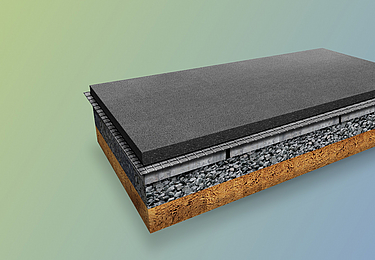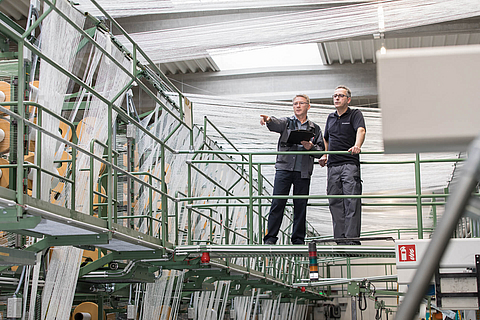

The world we live in is the world we work in, where we think about today and tomorrow. Sustainability means making this one world worth living in. For us, for future generations and with all the technical possibilities available to us. That's what we're committed to.
We engineer a more liveable world.


Avoidance of energy-intensive
steel and concrete elements


Conservation of
natural resources


Reduction of
mass transports


Energy saving through
lightweight materials


Sealing of contaminated
sites and landfills


Filtering and binding of
dangerous substances
Stay up to date!
What we do
Higher, faster, further at any price – these were the watchwords of past decades. But the climate has changed and with it our consciousness. The HUESKER Group assumes social, economic and environmental responsibility.
Modern engineering thinks ahead: costs and benefits are weighed up, resources are conserved and the environment is protected. Together and in partnership, we act according to a modern maxim: more effective, more intelligent and more sustainable. Our products also help other companies to act sustainably.

Our employees will tell you how we do our part to protect the environment. We are proud of our big projects and small ideas that reduce CO2 and drive environmentally friendly action.

Personal reports from our employees show how we use resources efficiently, comply with and demand ethical business processes, develop innovative products and thus make a valuable contribution to positive economic development.

Learn about our commitment to our employees, partners and neighbours in personal stories. We attach great importance to the well-being, safety and health of our fellow human beings as well as the promotion of local associations and initiatives.
The HUESKER Group is aware of its social, economic and environmental responsibility. Sustainable development is commonly understood as development that meets the needs of the present without jeopardizing the ability of future generations to meet their own needs. Of course, we live up to this claim wherever we are personally active.

With state-of-the-art production methods and complete quality control, HUESKER guarantees the highest quality at every stage of production. Our actions are geared towards sustainability in all value streams and thus the careful use of energy and resources. The ISO-50001 and ISO-14001 certifications are proof of our sustainable energy and environmental management.
We love what we do. Since 1861. With each project, our expertise and enthusiasm have grown. That is why we attach great importance to the term "value creation": From the development to the completion and application of our products, we attach great importance to the sustainable use of energy and resources. And one of the most valuable resources is each and every employee.